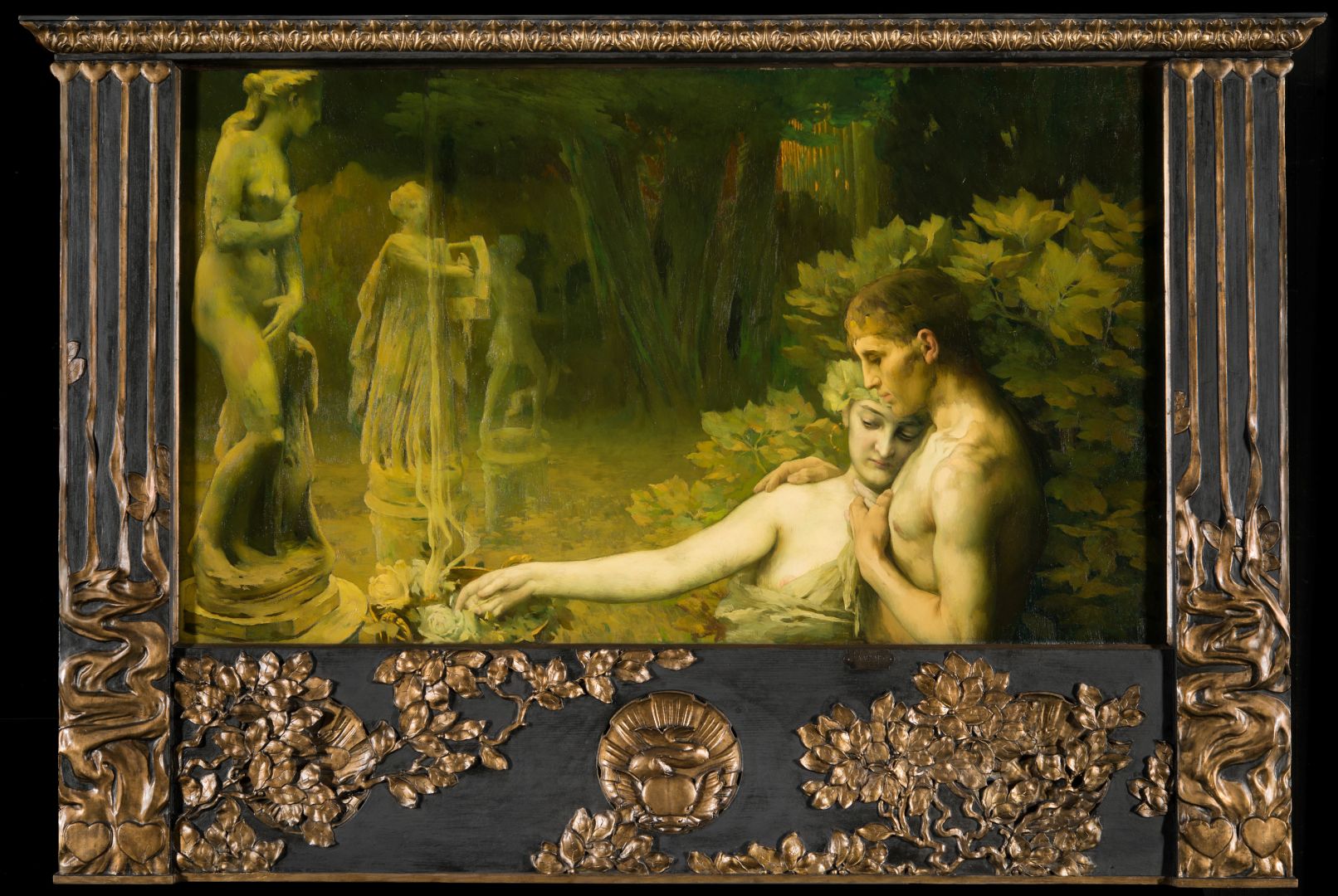Paradise in Heaven and on Earth - 2. view
Golden Age
VASZARY János
Kaposvár, 1867 – Budapest, 1939
Golden Age, 1898
The emblematic chef d’oeuvre of the Hungarian Secession, Golden Age was first exhibited in 1898 in Budapest’s Hall of Arts, where it was awarded the grand prize by the National Hungarian Association of Fine Arts. Subsequently, at the Exposition Universelle in Paris in 1900, the painting earned a bronze medal.
The conception of the painting shares affinities with the mixture of symbolism and naturalism that typified the German Jugendstil, and its unique atmosphere and fine sensuality are derived from the duality of traditional academic-type modelling and the contrasting decorativeness.
In the foreground of a park fringed by ancient statues – Apollo and Diana – the embracing naked couple are burning their offering to Venus, the goddess of love. The dreamlike atmosphere is generated by the opalescent green colouring of the picture, and by the contrast between the dark green background and the fluorescent figures. The ornately carved frame, also designed by Vaszary, is an integral part of the composition; the Secessionist motif of the painting, the wavy wisps of the smoke of sacrifice, continue to flow and spread across the richly worked ornamentation of the wooden frame.
